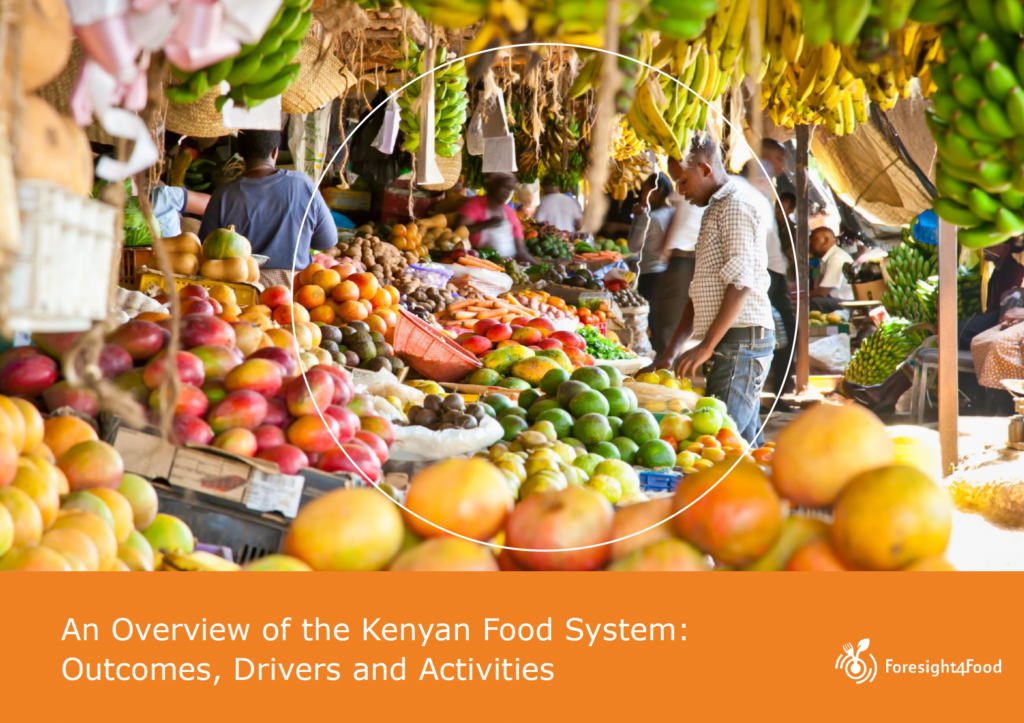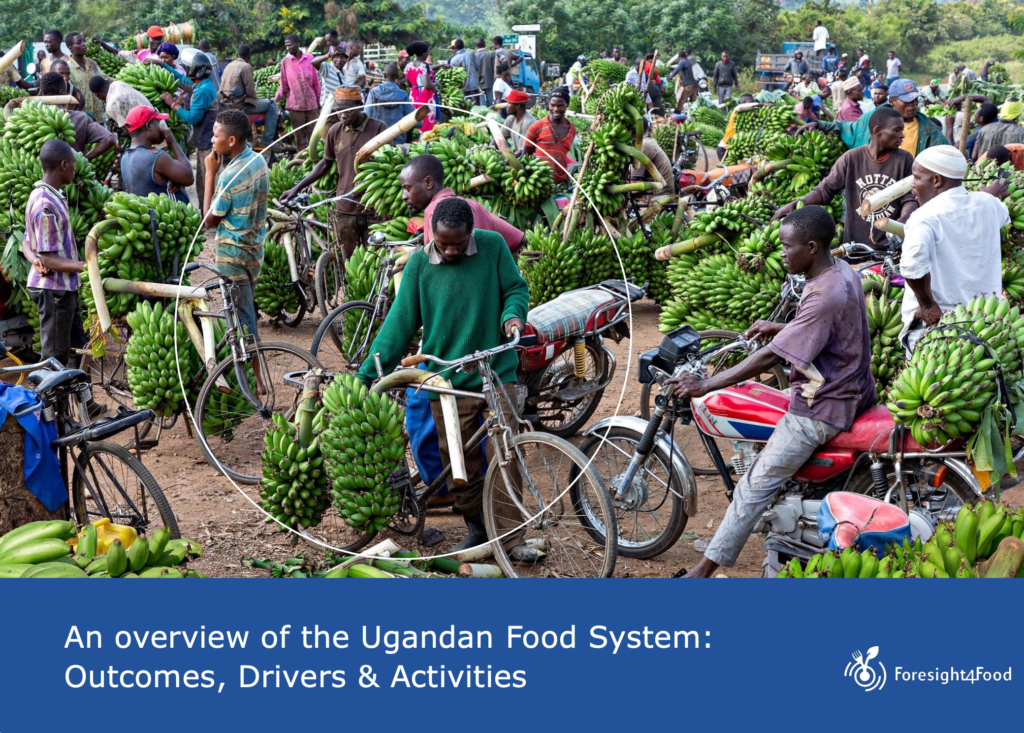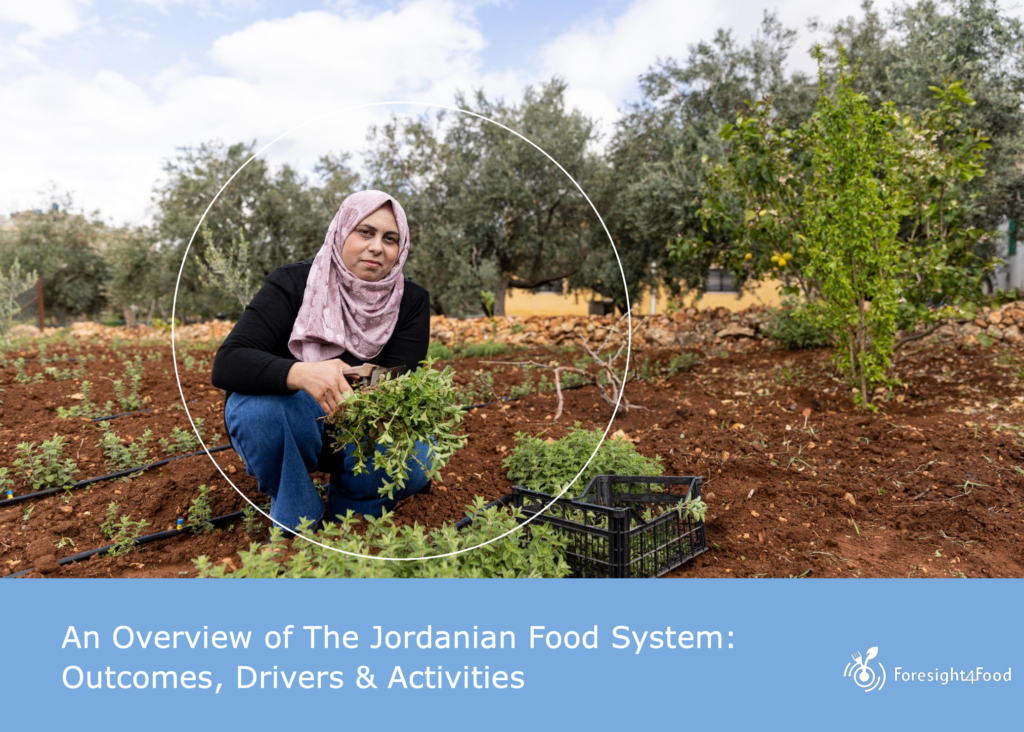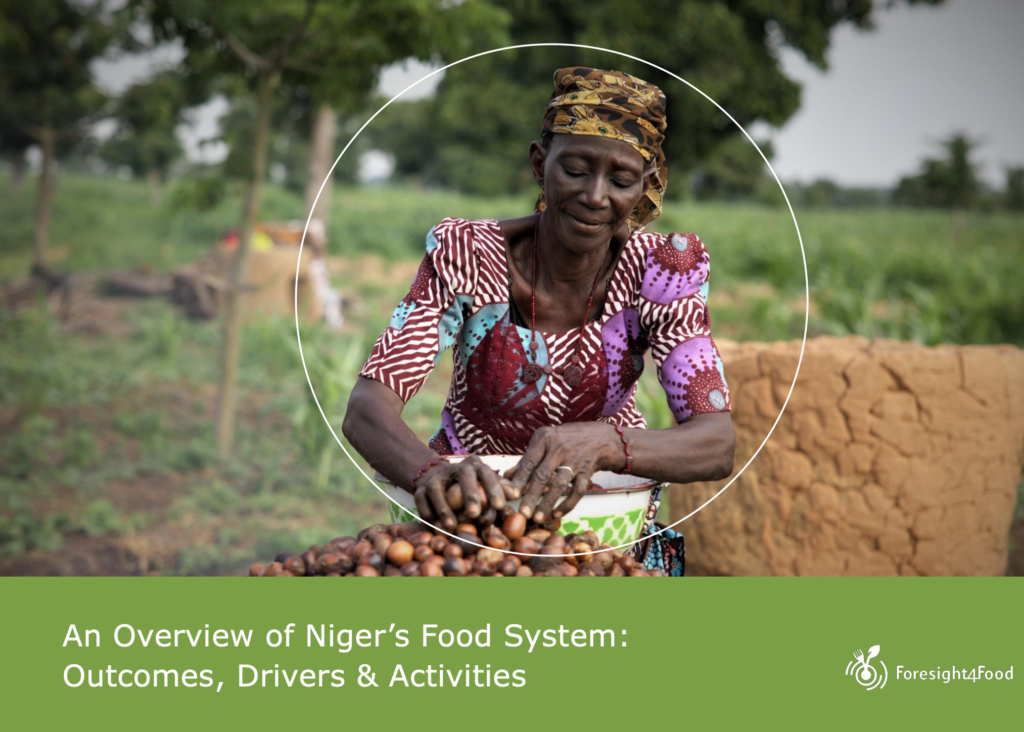Food System Maps
Over the past year, the Foresight4Food Foresight for Food System Transformation – FoSTr team and our country partners have begun a foresight process in Jordan, Uganda, Kenya, Bangladesh, and Niger to support national food system transformation. As an initial step, a collective understanding of the food system in different contexts was needed. Hence, the Foresight4Food team in collaboration with our facilitators and research partners in each focus country, created comprehensive food systems reports mapping the dynamics, trends, drivers, and activities within the food system.

Kenya
Kenya is home to more than 54 million inhabitants and possesses seven distinct agroecological zones, from highlands and coastal zones to semi-arid lowlands. Kenya’s food system involves a wide range of food-related activities and provides multiple outcomes to Kenyan society. The country’s food system has multiple drivers, including climate change, urbanisation, population growth, economic modernisation, governance restructuring, digitalisation, and social inequality.
The report is intended for use in discussions amongst food system stakeholders in Kenya, aimed at building on the ideas presented herein. This published version offers a snapshot of the current status as of 2024.

Uganda
Uganda, known for its rich agricultural heritage and diverse array of food products, finds itself at a crucial crossroads in its food system evolution. Despite favourable climatic conditions conducive to agriculture, the country grapples with pressing socio-economic, nutritional and health challenges, which are exacerbated by rapid population growth. While the agricultural landscape flourishes, inadequate infrastructure hampers market access, leading to uneven food distribution and substantial post-harvest losses.
The objective of this report is to describe the Ugandan food system in order to provide evidence-based input for a participatory scenario process to support the development of food system transformation in the country.

Jordan
The Jordanian food system delivers a variety of outcomes to society, including the capacity to feed its population, contribution to the GDP, gradual poverty reduction and a reduction in severe undernourishment. Food security and food systems have had high priority on the development agenda of the country since 2021.
The objective of this report is to describe the Jordanian food system in order to provide evidence-based input for a participatory scenario process and for the development of an Action Plan in Jordan, led by Jordanian stakeholders, to support the development of food-system transformation in that country.

Niger
Located at the heart of the Sahel with a population of over 25 million, Niger is the largest country in West Africa. Niger’s food system is subject to harsh environmental conditions with degrading natural resources and intensifying desertification.
This overview is intended to build a collective understanding of key dynamics in food system outcomes, drivers and activities of Niger’s food system. It will help identify trends and uncertainties that will shape the future of the food system and provide the foundation for a comprehensive and participatory process that draws upon foresight and scenario analyses that support food systems change.

Bangladesh
The Bangladesh food system serves over 170 million people each day. One-third of the Bangladesh population works in agriculture, while over 70% of available land in Bangladesh is dedicated to farming. The food system delivers well on several outcomes, including reducing poverty rates and food insecurity. However, recent shocks, such as the COVID-19 pandemic and the Russia-Ukraine war, have hindered progress and caused stagnation in some food security indicators.
Merging foresight approaches with an understanding of the complex structures and key outcomes of current food systems in Bangladesh, the Foresight4Food initiative developed a means to facilitate planning for food system transformation processes.